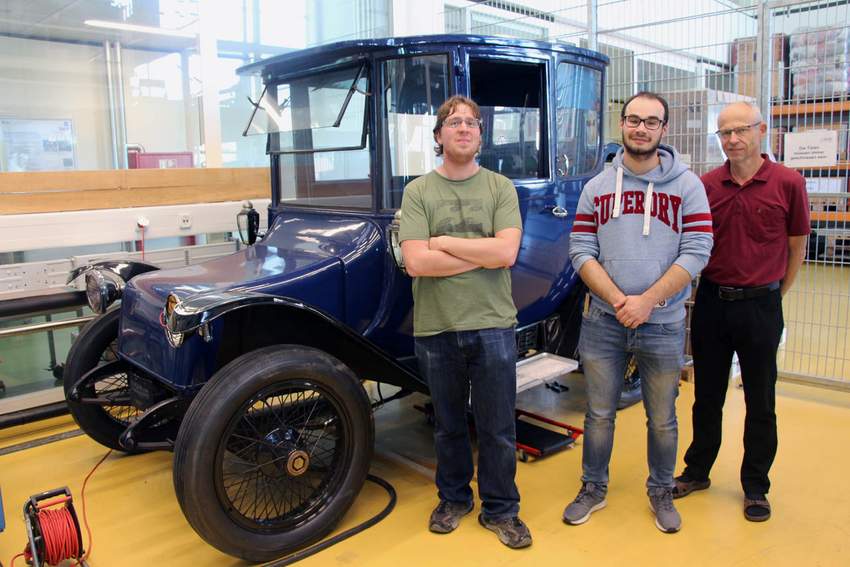A Tesla-ancestor needs new batteries
Two students repair a 100 years old electric car. They update the battery-system and restore the car's driving functionality.
Electric cars aren’t an invention of the 21st century. Back in 1900, a lot of cars did use electric energy, even more than gasoline. A proof of this statement is the DETROIT ELECTRIC CAR built in 1918 and recently bought by a car collector that lives in the surrounding area. Two students at the Institute for Electric Power Systems did both, build up a new modern battery and restore the car’s driving functionality.
The car benefits of it’s four poles commutated series-wound motor, because it has a lot of torque at low speed, which reduces after acceleration. To provide different levels of power, two identical batteries are used in the car. They can be connected in series or parallel in order to deliver high voltage or high current. An additional feature are the two excitation windings, which also allows the driver to use field- weakening. A big advantage of this circuit is that only at very low speed power is dissipated in resistors. It is also interesting that the approach to control an engine by it’s voltage and it’s excitation is quite the same as today, even with different types of machines.
Two identical batteries work as energy storage element of the car. In contrast to the motor and the level switch the battery includes modern technology. The two lithium-ion batteries - which are build up in two metal encasements - can be removed easily from the car to restore its original condition. The main goal of using used batteries of an accident vehicle is not to improve the range of the car, but use the batteries for a second time instead of disposing them.
To achieve almost the same rated voltage as with the original batteries, a total number of twelve cells is connected in series, with two in parallel for higher charge. Both batteries also include a fuse and a diode to avoid compensating currents when switching from series to parallel connection of the batteries. A battery-management-system provides the security functions of the battery, monitors the state of charge and controls the balancing of the cells.
- Determine the electrical and mechanical functionality
- Drawing of the schemas for both, drive and lights
- Figuring out a concept for the batteries with the given cells
- Assembly of the batteries with a battery-management-system
- Check and - if necessary - repair of the whole electrical installation
- Comprehensive test drives
- Students: Marc Müller, Yanick Frei
- BSc Electrical and Information Technology degree programme
- Coach: Professor Dr. Felix Jenny

